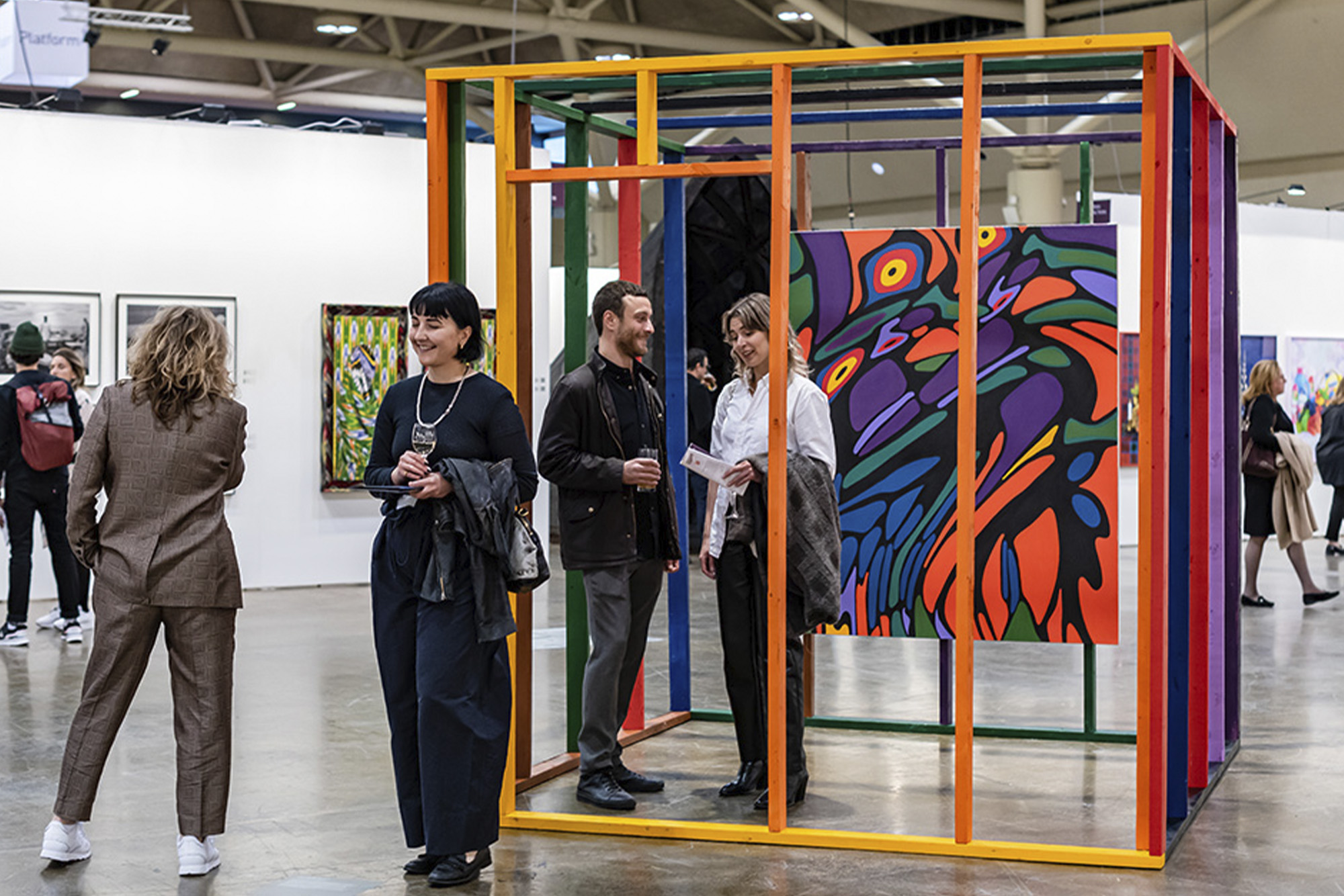What To Expect From Art Toronto 2023
Art Toronto is Canada’s preeminent art show, with over one hundred galleries set to exhibit this year. Since its inception at the turn of the millennium, the fair has seamlessly integrated distinct creative processes into one cohesive show; they’re committed to showing the diversity of Canadian artists on the global stage. After tonight’s launch, Art Toronto will be on view through October 29th. Special programming — including a conversation with curator Kitty Scott and incoming MoMA PS1 Director Connie Butler — will take place at the fair. Canadian exhibitors span from British Columbia to the Maritimes, while international guests include galleries as far as Europe and South America. Speaking with Mia Nielsen, director of Art Toronto, SHARP went behind the scenes of the annual exhibition to learn about art collection, gallery curation, and standout exhibitors.
What can someone expect from galleries and exhibitors this year?
We have 110 galleries this year. And that includes exhibitors from across Canada — so many groundbreaking, notable galleries. Catriona Jeffries is joining us, Patel Brown will be there, Paul Jay, lots of incredible exhibitors. We have international galleries from across the States: Chicago, LA, New York.

Toronto is the most multicultural city in the world and our audience reflects that. So in addition to Canadian galleries and artists, we want to give collectors the opportunity to connect with more international artists. This year, we’re thrilled to have galleries from Seoul, Germany, France, Mexico and Buenos Aires.
How does that recruitment process work — are you the one reaching out to these galleries within Canada and abroad, and if so, what qualities are you looking for?
That’s a fantastic question. The short answer is yes, I do the gallery outreach. And I think that, you know, Art Toronto is a unique fair because it’s the only international fair in Canada. So, it’s important to me that we connect with that Canadian market from across the country. There’s such an incredible diversity of galleries in Canada — and artists, of course. We’re such a multicultural country — the Indigenous voices are so important to that identity. So, connecting with collectors and an art-going audience… getting the right galleries that speak to this identity is important to me.
Then, when I look at international galleries, I’m looking to enrich that national conversation. For instance, we have a gallery coming from London this year called Yield Gallery, and they’re bringing a solo exhibition of an artist by the name of Richard Hamilton. He was Canadian, and a really groundbreaking artist working in New York in the early 80s. He was friends with Warhol and Basquiat, and he was one of those first artists who went from doing street art to working in the gallery. So this is someone that Canadian audiences may not be super familiar with. But the work he did in that time was really important.
What are some of the themes that might separate this show from previous years? Are there trends you’re seeing in the Canadian art market?
Something that’s really exciting about this fair is watching the careers of Indigenous artists grow. I’m thinking about somebody like Caroline Monnet, who uses construction materials in her work with Mohawk iconography. She’s someone who just had a huge solo show in New York. Meryl McMaster, is an extraordinary photographer, she’s going to be represented in Washington next year. Duane Linklater, who was in the Whitney Biennial last year, he’ll have a major piece in in our Focus exhibition this year. So lots of super exciting things that way.
It’s also a big year for Jack Bush, the Jack Bush catalogue raisonné is coming out. Bush is an important Canadian abstract painter, [he’s] well regarded internationally. There’s a big [Jean-Paul] Riopelle show on at the National Gallery right now. So Canadian modernism is having a moment.

It sounds like there’s a pretty big range of media being used here: you mentioned photography and then construction material — is that found material that [Caroline Monnet]’s using?
No, she works with insulation, and like, Tyvek — you know, that material that’s often used to cover buildings under construction? And she’ll embroider on Tyvek.
That’s awesome; so you have your traditional paint on canvas, but there’s people expanding the reach, maybe, of what we consider art.
Exactly, exactly.
What piece of advice would you give to visitors?
For those who are just beginning, you know: the Art Fair is an incredible place to just come and learn about your own tastes. You will see hundreds and hundreds of artworks, and that immersion will teach you a lot about what you’re drawn to. I often say that if you wake up the next day, thinking about a piece you saw the day before… when things linger with you like that, when it connects with you, that’s your instinct telling you: “this is the right piece.” So, I’d definitely encourage people to follow their instincts that way.

There are works at an incredible range of price points; like sure, if you want to buy a million dollar painting, we’ve got that. If you have $500 and this is a big treat for yourself, there’s work here for you too. And, you know, keep your eyes peeled. Ask questions — the galleries are here, they want to talk about the work. They want to connect with new audiences. So, definitely ask questions, don’t be shy. There’s never a bad question.
Featured image courtesy of Art Toronto.

























